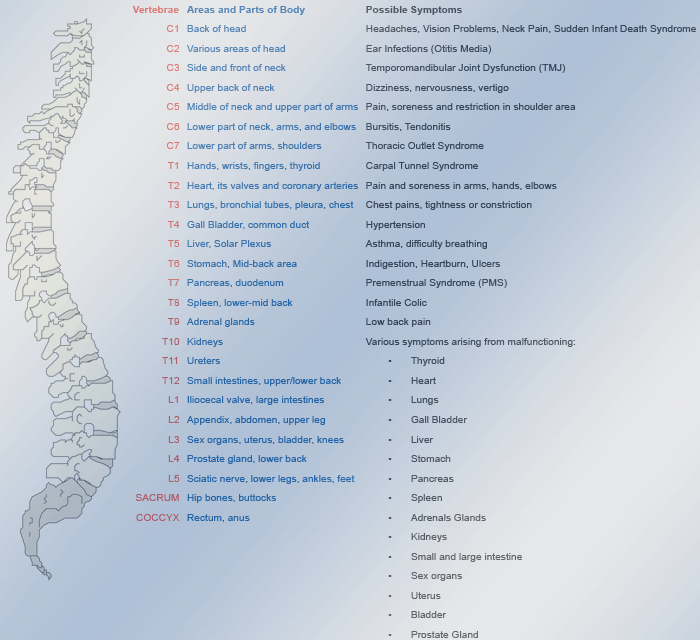Healthy Tips for a Healthy Spine
STUDY SHOWS CHIROPRACTIC IMPROVES NON-MUSCULOSKELETAL CONDITIONS
A new international analysis looks into the visceral or non-musculoskeletal benefits of chiropractic care.
The experiment surveyed 5,607 chiropractic patients cared for by 385 doctors of chiropractic in Canada, the United States, Mexico, Hong-Kong, Japan, Australia and South Africa.
The patients were asked if they had experienced improvement in allergies, asthma, breathing, circulation, digestion, hearing, heart function, ringing in the ears, sinus problems, urination and other non-musculoskeletal concerns.
According to the report "positive reactions were reported by 2% to 10% of all patients and by 3% to 27% of those who reported to have such problems."
"Most common were improved breathing (27%), digestion (26%), and circulation (21%)."
Patients were slightly more likely to report non-musculoskeletal improvement if they had been told they might have such reactions, if they received adjustments to the upper cervical spine, if they received adjustments to the lower thoracic spine or if they were female.
The study's authors conclude that "a minority of patients with self-reported non-musculoskeletal symptoms report definite improvement after chiropractic care, and very few report definite worsening.Future studies should use stringent criteria to investigate a possible treatment effect and concentrate on specific diagnostic subgroups such as digestive problems and tinnitus."
The following tips can help you take better care of your spine:
Make sure you have a firm mattress that keeps the spine aligned and supports the spine's natural curve. The best sleeping positions are on your back or side.
When standing for extended periods, rest one foot on a small stool to maintain spinal curvature and relieve pressure. The knees should be bent when bending forward. Low-heeled shoes may help by maintaining spinal curvatures and cushioning your weight.
Use chairs that promote good posture and support your back. Placing a lumbar support in the lower portion of your back may help support your spine's natural curve. Readjust the seat of your car so that y our knees are level with your hips.
When bending forward, bend at the knees and hips, but keep your back straight. This will help to keep your spine's curvature in proper alignment. When lifting, keep your spine straight while using your legs to do most of the work. Hold the objects being lifted close to your body to keep the weight on your spine to a minimum.
The ABC's of Subluxations - Vertebral subluxations are displacements of the spinal bones (vertebrae) that can cause stress to your spinal cord and nervous system. Subluxations may be caused by poor sleeping habits, poor posture, strenuous exercise, injuries, auto accidents, sports, slips or falls, and in some cases, the birthing process itself. Chiropractic adjustments are very helpful in correcting subluxations and restoring optimal health.
healthy tips for a healthy spine
VERTEBRAL SUBLUXATION CHART
The Vertebral Subluxation Complex (VSC) is a chiropractic model depicting the components of the spinal column. One of the components is called neuropathophysiology which describes how the Vertebral Subluxation Complex produces interference to normal function of the nervous system.
The chart above illustrates which organ systems can be affected by a subluxation at a given spinal level.
Note - exact spinal levels may not exactly match symptoms - the nervous system is extremely complex. For more information, please ask Dr. Hennie.


